|
Imagine staying in a medieval Renaissance tower in San Gimignano for the ultimate Tuscan romantic adventure. That's just what Youtubers Jessi and Alessio did. Walking up and down 143 steps didn't lessen their spirits or their imaginations, dreaming of what it was like to live in this tower when it was built in the 12th century. Just don't forget the forks when carrying your dinner 100 feet up to the rooftop terrace!
Click on the photo above to watch their wonderful and fun video.  In the eastern part of Sicily is a hilltown which, when viewed from the air, resembles a primitive depiction of a man. Others might say the shape resembles a starfish clinging to the mountain. Centuripe (called Centuripae by the Greeks) is in the province of Enna, located 38 miles from Enna in the hill country between the Rivers Dittaìno and Salso, with a wonderful view of Mount Etna. Centuripe's roots extend back to the 5th century BC, when it was a Hellenic city. In the first century BC, Cicero claimed in his writings that the town had a population of 10,000 and was one of the largest and richest cities on the island of Sicily. 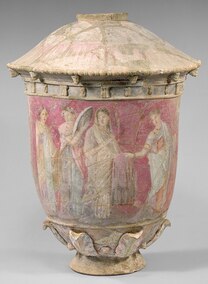 In the 2nd and 3rd centuries BC, a uniquely beautiful type of ceramics dubbed Centuripe Ware originated here, with tempura paintings applied to fired clay. Partly destroyed by Frederick II in 1233 (after which most of the inhabitants moved to Augusta), the city’s ruin was completed by Charles of Anjou. It was later rebuilt by Francesco Moncada, count of Adernò (now Adrano), and was ruled by his descendants as a county until 1813. Known as Centorbi until 1863, it passed to the Kingdom of Italy in 1860 and was the scene of heavy fighting in World War II.  Nighttime view of Mount Etna from the town Nighttime view of Mount Etna from the town Remains of the classical city include Hellenistic houses with wall paintings, baths, and cisterns, and several substruction walls, mostly of the Roman period, on the steep slopes. Centuripe’s civic museum and the Palazzo Comunale exhibit Hellenistic terra-cottas, finely painted vases of local manufacture, and relics from a large number of excavated tombs in the area. Agriculture (grains) is the town's mainstay, caves with sulfur and salt deposits, and quarries for chalk and marble are other resources. Nearby are local mineral springs. This sleepy town is well worth a visit, if only for the stellar view of Etna from it's Castle. --Jerry Finzi 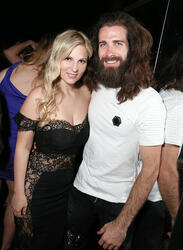 Sara & Luca in their former glamorous life Sara & Luca in their former glamorous life Sara Bertagnolli and Luca Sguazzini are two beautiful, amazingly adventurous Italians who have the voyager bug--bigtime. They have one of the more successful YouTube "vanlife" channels. They have traveled from Alaska and the Arctic Sea to Tierra del Fuego at the southern tip of Argentina in an old Ford pickup truck they dubbed “Lucky LeAw” (for Leave Everything And Wander). They left Italy in 2017 with only $1700, leaving their careers behind for their starting point in Canada. All they had was a bold desire to travel from North to South America along with an unstoppable passion and their ingenuity. The fact that they are both multi-lingual doesn't hurt either. Sara speaks Italian, German, English, and Spanish. Lucas speaks Italian, Portuguese, Spanish, and English. The quality of their videos got better and better as they traveled and are wonderful to watch.
Having experienced a bit of this type of brave voyager's attitude in my younger years--by traveling over 5000 miles on a moped bogged down with 50 pounds of camping gear throughout France and Switzerland--I was drawn into their videos from the beginning. They subsequently had to return to Italy and leave their trusty, rusty Lucky LeAw behind in Brazil when Covid hit (with a dream to go back and complete their a round trip back up into North America). They currently live in their small mountain house in Northern Italy they call Luckyland. Being resourceful, as soon as travel was permitted, Luca outfitted his old van from his motorcycle racing days and dubbed it Luigi. Italian travel videos followed as they voyaged to the most amazing Italian locations.
Luck plays well in their lives--a common and obvious theme about their view of life itself. Luck made them find each other. Luck helped them get out of some very precarious situations during their travels. Luck and love saw them marry. Luck also brought them their new baby, Luce (in Italian, meaning Light, pronounced "Loosh-ah"). Her angelic face and smile remind me of when my son Lucas first came to our little family. Precious. A Change in Luck... Luck seemingly failed Sara's dear, young and strong Luca recently, who after from suffering with headaches during the last month had three major strokes this past week. Sara's video is painful to watch... So, right now, I am asking all of my Grand Voyage Italy followers (all 250,000 of you) to go to Leave Everything and Wander's YouTube channel and watch their videos. Subscribe to their channel. (It costs nothing). Get hooked--as we did--by binge-watching every video in chronological order. You'll be sharing Sara's and Luca's adventures and helping them financially. YouTube pays them for placing ads on their videos. The more subscriptions and the more Likes, the higher their income. Although Italian healthcare is free, they will need this boost to help them through this difficult time.
And to Luca, we would like to say: Rimani forte ... sii coraggioso ... e ricorda, sei amato. We are positive he has the determination and fortitude to get though this and come back to full health. --Jerry, Lisa and Lucas Finzi One of my Italian cousins, Enrico Finzi, is offering his magnificent villa for sale. If you know someone looking for a glorious, restored villa in la Bel Paese, pass it on. The gardens, in-ground pool and two separate villas on the property gives it great income potential as a holiday rental or Bed & Breakfast. --Jerry Finzi This Beautiful villa compound dates back to the second half of 1700s, completely restored at the end of the 1980s, surrounded by a garden of about 3000 square meters with in-ground swimming pool, in the center of the village of Piangipane, 7 km from Ravenna in Emilia-Romagna. CLICK HERE to see his villa in 360 degrees! The property is divided into two independent and adjacent buildings for a total of about 580 square meters. This offers the possibility of use as a Bed & Breakfast or vacation rentals! VILLA MAGGIORE - Main House The property is divided between ground floor, first floor and attic over an area of about 370 square meters. On the ground floor there is a spacious entrance to the garden, a kitchen, a small bathroom and a large living room with a fireplace. On the first floor a large entrance hall to the three bedrooms, two bathrooms and a dressing room with access to the attic completely furnished with custom cabinets. The main rooms on the first floor with vaulted ceiling conserve original well-preserved frescoes restored in the recent past, Tuscan terracotta floors and wood. MINOR VILLA - Small House It is divided between ground floor and first floor on an area of about 210 square meters. On the ground floor there is the entrance with a large fireplace, a living room with a large fireplace, a large dining room with a kitchen with a fireplace, a bedroom and a bathroom. On the first floor a large bedroom and a large bathroom Tuscan terracotta floors and wood Internal doors of the highest historical value dating back to 1600 Both buildings are partially furnished with custom-made handicraft items of value. COMMON AREAS: Garden of 3.053 square meters Swimming pool with wooden technical room Pond with fish and aquatic turtles Small house with two heating boilers Irrigation system divided with 11 parts control unit powered by an artesian well General conditions of the villa and the garden: excellent DISTANCES FROM VILLA TO: Ravenna city center 10 min Bologna city center 40 min Bologna airport 45 min Rimini airport 45 min Florence 90 min Milan 120 min Venice 120 min Rome 180 min Various locations on the Adriatic coast from 20 to 40 min NEW REDUCED PRICE: € 690,000 negotiable NO INTERMEDIARIES REDUCED TAXES FOR SUPERINTENDENCY FINE ARTS ENERGETIC CLASS G Or... you can can contact Enrico on FACEBOOK. For more detailed information, here is a link to the real estate listing.
 Voyagers to Tuscany identify the sunflower with the Tuscan lifestyle. They see it as a romantic symbol, overwhelmed by vast fields of sunflowers in the summer sun. They will come home with pasta bowls, dresses or tiles decorated with them. But they forget one simple fact: girasole (sunflowers) are actually a cash crop in Italy, and several regions grow them, not just Tuscany. And don't count on seeing sunflowers in the same fields every year. Italians farmers, like all good farmers, tend to rotate their crops. Sunflowers grown in a particular field one year might be replaced by beans the next. It also depends on whether the Italian government is subsidizing the sunflower crop or not. By the way, the word "girasole", literally means "turn to the sun", which is what sunflowers do--they always tend to face the sun and follow it from sunrise to sunset. In northern regions or in higher elevations, the sunflower bloom will be later, but in general (depending on variety grown and the weather), in Tuscany the height of the spectacular display will be from the beginning of July to the about July 15th. In Lazio you can see the yellow beauties in the beginning of July, in le Marche the best time to see them is mid-July to early August. Sunflowers are also grown in the regions of Emilia Romagna, Umbria, and Friuli-Venezia Giulia  Sunflower seeds are grown for the seeds as food and for oil. They can be eaten raw, roasted or dried. They containing protein, vitamins A, B, and E, calcium, iron and nitrogen. Sunflower oil has a light color, mild flavor and low levels of saturated fats. Chefs love it because of its high smoke point--it doesn't burn as readily as other oils--and because it doesn't impart much of its own flavor. Sunflower oil accounts for 8% of the cooking oil used in the whole world. Consider this: Even with its own high production of sunflowers, the Italian supply doesn't come close to meeting Italy's demand fo oil and seeds. Italy imports as much as 70% from the crop's main producers--Romania, Hungary and Bulgaria. If things go the way they have been going, the sunflower crop might be in desperate trouble. Production has dropped from 500,000 planted acres in 2003 to less than 175,000 acres in 2017. Market prices and lack of government subsidies have a lot to do with the shrinking harvests. So the next time you are cycling through fields of girasole, turn your head to the sun as they do, and say a little prayer for the sunflower to continue to brighten the beauty of Italy. --Jerry Finzi On Amazon... Watch the videos below to see how sunflowers are grown, harvested and turned into oil...
 Florence crowds Florence crowds In 2017, over 50 million tourists stayed in Italian hotels--and ONLY during June, July and August, the supposed "high season". But in the last decade, the "high season" has been expanding to early spring and as late as October, and most visitors to Italy don't stay in hotels... How many more visitors stayed in rental apartments or with friends or relatives? How many camped or stayed in hostels or local B&Bs? Keep in mind, the population of Italy is only around 60 million (a decent number for such a small country), but some estimates put the number of actual tourists from all over the world visiting Italy at over 420 million in 2017 alone. Just imagine if the U.S. matched or even surpassed its own 320 million population with half a billion tourists a year?! The actual current number of tourists visiting the U.S. annually is a mere 80 million. It seems Italy is being over-promoted, overbooked and over-run by tourists. As an example, just look at what happens to Venice during the summer months when as many as 6 cruise ships each day dump (according to recent numbers) over 32,000 people onto the fragile jewels of its sinking islands. Over 600 cruise ships a year make daily stops in Venice! The influx has become so bad the city is being gentrified, with mom and pop shops turning into tacky gift shops selling things made in China, and with local residents moving out when they realize their homes are worth more as holiday rentals. Is it time to give Italy a bit of a rest from the wear and tear on its tourist hotspots... Venice, Florence, Pisa, Rome? Are these "must see" destinations turning into Italian Euro-Disney spots, lacking authenticity and losing their cultural heritage? We propose that when Italy opens up again as this pandemic dies down, Americans should visit a small town in Italy where the real Italian lifestyle can be experienced, instead of putting up with indignities of enormous, shoulder-to-shoulder crowds, pushing, shoving and tight schedules of the "must see" locations. If you are traveling with kids, this should be an important consideration. Children can have a much more enjoyable time if you slow it down and toss out the schedule. There are tons of things to do with kids all across Italy... water parks, go-karts, dinosaurs, science museums, beaches, cycling, hiking and more. How about Monte Isola, a town on Lake Iseo in Lombardy? Or visit the mountain village of Castelluccio in Umbria for a taste of small town, mountain life. Instead of Florence, visit Pienza, one of the most beautiful Renaissance villages in Tuscany. And instead of paying high fees to have a spa day, go where the locals go for free, to Bagno San Fillipo in southern Tuscany and bath in the hot, natural sulfur springs under huge mineral waterfalls frozen in time. And the Cilento is much less crowded (aside from August when Italians flock to its beaches for their Ferrragosto holiday) that the Amalfi Coast and has lime after mile of real sand beaches. And don't forget Puglia, especially the tip of the boot around the port town of Brindisi. Puglia isn't like any other part of Italy and nearly every town has something unique to offer. For amazing beaches, take a plane or ferry over to Sardinia. Its natural wonders are unspoiled, with the sea as clear as tap water. So reconsider when booking your next visit to Italy. Throw away the must-see list and visit the real Italy. Slow down, relax and spend time in one location and area at a time. Find out what days the local market is open. Rent a house or apartment and do your own cooking with amazing, fresh ingredients. Meet the locals. Learn the local dialect... even if just a few words. Keep in mind that Italy isn't one thing... it's not just Rome, Florence, Pisa and Venice. There are 20 independent regions in Italy, each with its own language, cuisine, customs and culture. You can literally throw a dart at a map of Italy and then plan a trip to the region the dart lands on. Trust me. Italy is a lot more than standing on line for hours just to be rushed through the Sistine Chapel in five minutes, with throngs of tour groups shoving you from behind.
Learn to live the Italian lifestyle while you are in Italy, and I guarantee you'll have learned how to life a bit of that same lifestyle when you're back home. Ciao e buon viaggio. --Jerry Finzi Why or how did coronavirus travel to Italy? Perhaps there are several reasons... One might argue that being overcrowded as one of the most popular, "must see" destinations in the world is a large factor. What do most tourists do when they get to Italy? They all flock to the few "must see" sights on their lists--Vatican Museum, Trevi Fountain, Leaning Tour of Pisa, a gondola ride in Venice, stumbling around Pompeii wondering what they are looking at, and in Florence to see that big, naked statue of that guy David--all the while crowding, jamming and shoving to see things that most have no intellectual, spiritual or emotional connection with. Sure, they can say they "saw" the Sistine Chapel when they get home and brag, but did they really take it all in within the 10 minute, pack-them-in and roll-them-out method the Vatican Museum affords these hordes? Tourists who choose to go to "off the beaten path" destinations always experience much less crowding, but actually report having a more authentic "Italian lifestyle" experience. As example, on one very crowded day in Florence (literally, shoulder to shoulder crowds) we decided to head up to Fiesole, a chic town in the hills above Florence. No crowds, amazing food, beautiful architecture, a Roman amphitheater, a fantastic Etruscan museum, topped off by a walk along Fiesole's belvedere with panoramic views of Florence. We had a great experience without the crowding! Facts During 2018 alone, 63.2 million tourists visited Italy. That is more than the population of Italy itself! Contrast that in the U.S. where 77 million tourists visit annually... in a country with nearly 330 million people. I can't imagine how impossible things would be in the States if we had to deal with over 330 million tourists crowding our own national treasures, monuments and parks. Add this fact to the equation: China sent 3.5 million tourists and nearly half of them visited Lombardy and the Veneto, the regions of northern Italy hardest hit by the coronavirus. And although this virus should never be named after the hotspot where it originated, we can all agree that China had this virus early on and wasn't truthful about it for over 3 weeks. Northern Italy has been getting enormous amounts of wealthy Chinese tourists as well as many overbooked Chinese tour groups and cruises. Italy is the fifth most visited country in terms of international tourism arrivals. Italy also contains 55 World Heritage Sites--more than any other country in the world. As recent as the 1950s and 1960s, cities like Rome and Florence were deserted by today's standards. I remember seeing a photo from the 1960s once when the Sistine Chapel had no time limit and was so un-crowded that some people actually would lie down on the floor with binoculars to spend their time examining every detail put up there by the Master's hands. There was no rush with most of these tourists having an art background. Look what Rome was like in the 1960s... No endless lines in front of the Vatican? And you can't really call that a crowd at the Trevi Fountain! Wouldn't it be wonderful if tourism went down to reasonable levels again? And you won't believe what Piazza dei Miracola looked like at the Leaning Tower in Pisa... empty! There were actually cars and buses traveling under the arch where nowadays the whole are is pedestrian only... The Growth of Tourism in Italy By the mid 1970s, airfare to Europe was getting cheaper and cheaper. At the time, I remember getting a round trip ticket to Paris (with no ending date for my return) for about under $300--just about one week's salary at the time. Then came the advent of cheap group bus tours of Europe--you know, "See 10 cities in 8 days!" In some cases, tourists would be on the bus for most of the day with only an hour or two to visit the "must see" sights on their tour itinerary. Then, back on the bus and into the next cheap hotel. Early next day, do it all again. By the 1980s, this package tour concept was taking off like crazy. And the man who invented the concept of package tours was "Mr. Italy", Mario Perillo. His very first offers were exclusively aimed at the land of his ancestors--Italy. Italy had a tourist target on its back from that time forward. He oversold tours for amazingly cheap prices. His son Steve still hawks these cheap tours and has only compounded the overcrowding at tourist destinations. Next came the cruise ships getting into the action, offering all-inclusive, everything-you-can-eat packages to to Rome and Naples or Venice and Greece. The food was "international", having little to do with the culture the tourists were visiting. It's still like that today... with people dining on NY Strip Steak, sushi, pizza or hamburgers while at a dock in Venice. Here's a vintage commercial from so-called "Mr. Italy" himself, Mario Perillo ... Then Who is to Blame? Have the Italians themselves contributed to the distribution of this virus? Well, surely they are at fault, generally speaking, if only for their cultural traditions and being an open, gregarious society. Italians love being with other people. They are warm and gracious and greet each other (and often, new acquaintances) with an embrace and kisses on both cheeks. Unlike in other countries, men also kiss cheeks, and even hold other men arm-in-arm while strolling and chatting about business or world events. Pensioners gather on piazza benches like flocks of pigeons. In the evenings, in virtually every Italian city, town and village, people gather in the early evening for a communal stroll--the passeggiata. But seriously, should we blame a population for just being themselves? Their daily habits are instinctive and in-born, based on a few thousand years of cultural customs and socialization. Italians will always be gregarious. They are also a generous society, evident by the thousands of Syrian refugees they took into their country. After this crisis is a distant memory, Italians will still take part in the passeggiata at the end of the day with neighbors, family and strangers. The old nonni will still gather in groups to exchange gossip. Old men will still sit shoulder to shoulder at tables playing scopa, that quick-paced, mysterious card game. And I hope and pray that their embraces and twice-kissed cheeks remain as they greet each other per sempre. So Who is Left to Blame?
Some in Italy might blame one single man, specifically, a 38-year-old man who checked himself into a local hospital in the town of Codogno, Lombardy on February 20th. Testing positive with the virus, he became the first recorded patient with the COVID-19 virus in Italy. But since there wasn't any mass testing for this specific covid-19 disease (there are several coronaviruses besides this one), many health officials believe the virus was already in Italy long before the first case was discovered. “The virus had probably been circulating for quite some time,” Flavia Riccardo, a researcher in the Department of Infectious Diseases at the Italian National Institute of Health said in a TIME interview. “This happened right when we were having our peak of influenza and people were presenting with influenza symptoms.” Perhaps we can blame the Italian government and Italian industry for their decision-making, allowing Italian companies to import Chinese workers instead of giving jobs to Italians, as in the case of Italian fashion houses bringing in Chinese labor to create "Italian" fashions. An estimated 310,000 Chinese people live and work in Italy--8.3% of the country’s non-EU citizens. Chinese are the third largest group of foreign nationals residing in the country. More than half live in the north, with 16% residing in the provinces of Prato near Florence working in the textile industry. Because of the lock-down, and the fact that these Chinese workers don't have contracts, or work part-time, leaving them with no help from the Italian government when they are laid off. Tens of thousands have already left Italy. But once again. The virus doesn't have a nationality. I suggest that no human is to blame. The real culprit is the non-discriminating, un-biased, equitable and even-handed culprit--the coronavirus covid-19 disease pathogen itself. Viruses recognize no laws of Man. Viruses obey no immigration rules. Viruses are color blind to our skin color. Viruses hold no passports. Viruses aren't a part of any single religion. Viruses don't belong to any political party. Viruses ignore national boundaries. Viruses don't ask for proof of age. Viruses attack our homo-sapiens species, of which every race on the planet is part of. There was a beginning of this crisis, we are now in the middle, and we all have to believe there will come an end. Andrà tutto bene... --Jerry Finzi, GVI 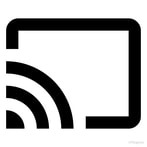 Many of us are in lock-down due to coronavirus restrictions and need to find creative ways to take a breath, stop watching the news 24/7 and simply relax a bit. Here's a great way: Take these virtual walking tours of some of Italy's most beautiful and interesting places. You can start watching these videos on your mobile devices and then Cast the video (also called Mirroring on some devices) to your large screen TV. Look for this logo when watching on your device. Enjoy... and take a breath. Andrà tutto bene. --Jerry Finzi, GVI
As the World Health Organization claimed, "This is not a drill". Italy is the fourth highest country affected by the outbreak of the COVID-19 coronavirus with its tourist industry taking a huge plunge. Tourism accounts for 13.3% of the Italian economy. Within the last 24 hours, Italy has reported 41 new deaths from the coronavirus. This brings the number of fatalities in Italy 148. The number of cases also jumped to a new high of 769, reaching 3,858 over the past two weeks. To illustrate how Italy is being impacted:
 The word for Hospital is Ospedale The word for Hospital is Ospedale Should you travel to Italy right now? If you are over 60 years old and have underlying health issues -- no. Why take the chance? If you are younger and healthy, you might have the experience that many rarely have--Italy's "must see" sights without crowds. If you are traveling to Southern Italy, you just might have made the safest choice. Still, stay safe, wash hands often for at least 20 seconds with hot water and soap; don't shake hands of embrace or kiss anyone; if you cough or sneeze, do it into your arm; try not touching your face after touching railings, doorknobs or elevator buttons; avoid public transportation; avoid crowded areas; if you become sick while in Italy, remember, they actually have a fantastic health care system--find a doctor or hospital. Resta in salute, amici. --Jerry Finzi by Simone Guzzi, from the Hotel Paradiso in Calabria The Abbazia Benedettina (also known as the Abbey of Santa Maria) in Lamezia Terme, Calabria, was commissioned by the Norman, Robert Guiscard in the 11th century to be erected on the remains of a Byzantine Monastery named after Hagia Euphemia of Nèokastron, which was heavily damaged by a Saracen raid. The ruins of this once majestic monastic structure marks the transition from the Byzantine to the Norman era, for several centuries after the first Normans had arrived in 1056. During his conquest of southern Italy and Sicily, Guiscard subjugated the towns of the valley and Sant'Eufemia, district of the actual Lamezia Terme, became a strategic point for the Norman conquest that eventually put an end to the supremacy of the Byzantine Empire in the whole Calabria. With the Normans, the so-called Latinisation began, bringing the influence of the Church of Rome to all the conquered territories that were under the Byzantine rite. The construction of Abbazia Benedettina on the remains of the Basilian church was the first step in this Latin irradiation. The designer was Abbot Robert of Grantmesnil, who Guiscard assigned the direction of his program of ecclesiastical architecture. The layout was inspired by the Nordic-Benedictine style of the churches of Normandy. The ruins seen today, surrounded by groves of olive trees, are the result of a violent earthquake in 1638, but visitors can still appreciate its Norman architectural details. On the main facade are the remains of the two bell towers, with evidence of three aisles and a larger central hall separated by a series of pillars. The side walls were illuminated by a series of arched windows. In its sanctuary, polychrome marble blocks led to the altar in the main apse, where on the sides there were columns resting on architectural elements of the Roman era. In this area was also discovered a floor made of colorful marble tiles, made from ancient marbles, whose use is typical of the Norman tradition. On the eastern side visitors can see the remains of the large walls, confirming that the abbeys were fortified, deemed necessary since the Abbey had to defend itself from repeated Saracen raids from the coast. One of the more important aspects of the Abbey would have been its scriptorium, where the Benedictine monks would have been busy transcribing and preserving ancient texts, both classical and Christian. The first substantial number of founding monks came from Normandy and France suggesting their important influence on the region's culture and religious education. The monks who came here were also are dedicated to charitable acts (by decree of the Benedictine rules), and were especially educated men, with many of them becaming Calabrese and Sicilian bishops. After the earthquake, there were reliquaries recovered that were kept in a crypt containing the treasure of the Abbey. Listed in an inventory of relics from 1624, a silver arm with a relic of St. John the Baptist and a silver head containing part of the head and a lock of hair of St. Euphemia. There were also the handwritten versions of the Gospel of Luke and the Acts of the Apostles. The Benedictine Abbey is about one mile west from Gizzeria Lido on the Calabrian coast. Click for MAP |
Categories
All
Archives
May 2023
|







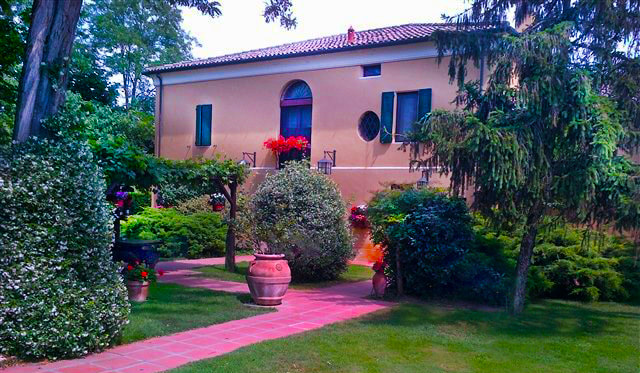







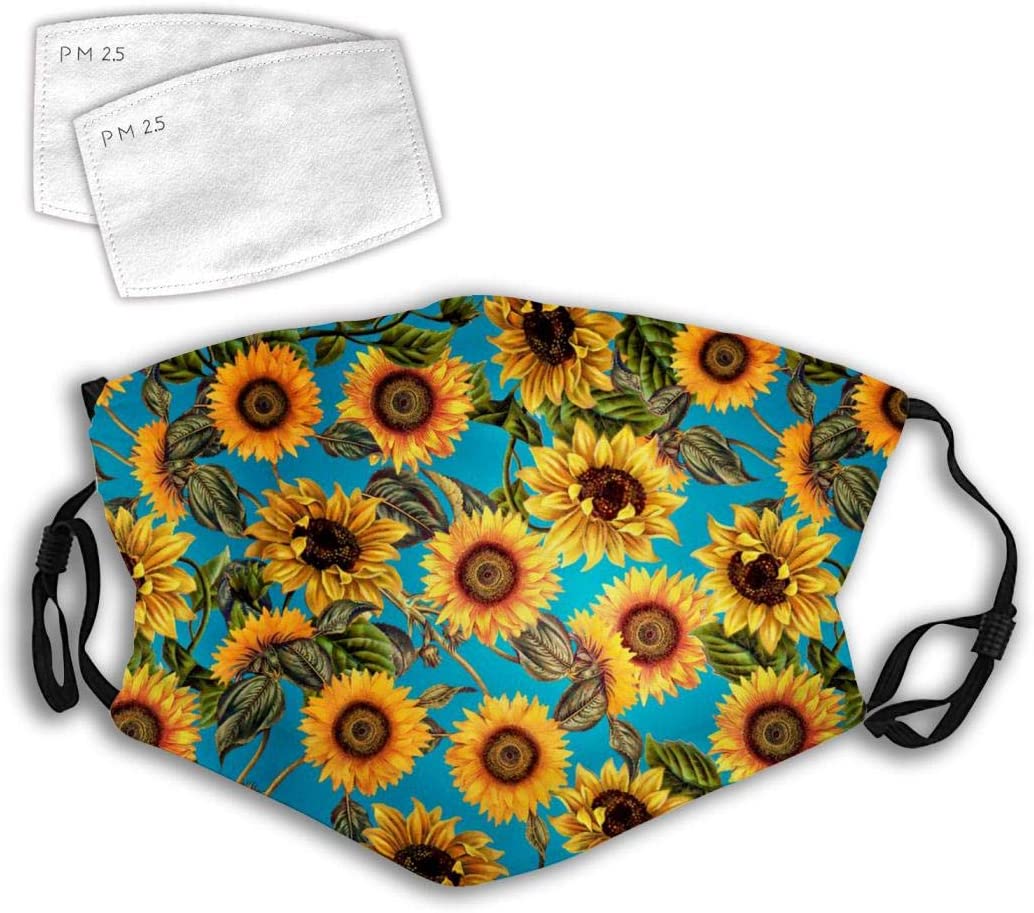



















 RSS Feed
RSS Feed
